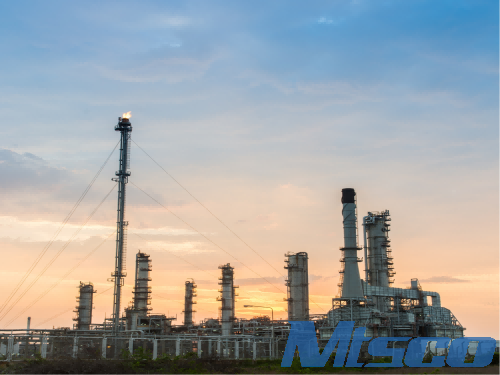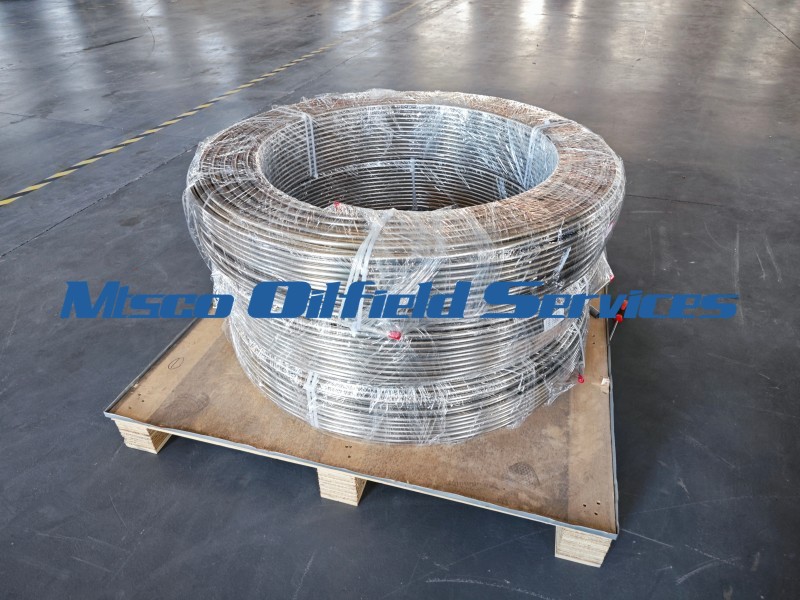Views: 0 Author: Site Editor Publish Time: 2025-07-14 Origin: Site








Have you ever wondered how cables can withstand extreme conditions like high pressure, temperature, and corrosion? Tubing-encapsulated cables (TECs) are engineered to thrive in such environments. TECs play a critical role in industries like oil and gas, telecommunications, and aerospace, providing unmatched durability and performance.
In this article, we’ll explore how TECs are made, their components, and the cutting-edge technologies involved in their production.
Tubing-encapsulated cables (TECs) are designed to handle extreme environments where regular cables fail. Unlike traditional cables, which typically consist of an inner conductor wrapped in insulation, TECs feature a protective outer tubing. This tubing can be made from materials like stainless steel, nickel alloys, or polymers, offering protection against pressure, temperature, and corrosion.
Encapsulation is crucial for industries that require high durability and performance, such as oil and gas. Regular cables often cannot survive the harsh conditions found in downhole environments or underwater operations. TECs, on the other hand, maintain signal integrity and power delivery in these challenging settings, even when exposed to extreme temperatures, high pressures, and corrosive chemicals.
The protection layer helps prevent physical damage from external impacts, ensuring that the core material remains intact and functional. This feature is vital in offshore oil rigs or remote locations, where harsh environmental factors can drastically reduce the lifespan of standard cables.
One of the most significant advantages of TECs is their ability to function without significant degradation over extended periods of exposure to harsh environmental factors. This makes them indispensable in critical applications where the cost of failure can be enormous. They also offer enhanced performance in extreme applications, making them highly suitable for industries where failure could lead to catastrophic consequences.

TECs are essential in several critical industries, where their durability and resistance to extreme conditions are key. Here are some of the most common applications:
Oil and Gas: TECs are used in downhole monitoring, helping track conditions like temperature and pressure. They’re also crucial for pipeline inspection, ensuring data can be transmitted over long distances without loss. With high tensile strength and resistance to corrosion, these cables ensure that systems stay operational in environments where others might fail. These cables are often deployed in deep-water oil wells, where they help in providing real-time data about the well’s conditions. TECs provide crucial monitoring capabilities, allowing for early detection of issues and preventing costly operational downtime.
Telecommunications: These cables play a key role in long-haul communication networks, especially subsea cables. TECs ensure reliable data transfer, even under the ocean's pressures. The corrosion resistance and flexibility of the materials used in TECs make them ideal for installation in underwater environments. In addition to subsea cables, TECs are also used in terrestrial and space-based communication systems. These cables ensure that global communication networks remain operational, providing uninterrupted service even in extreme environments like deep-sea trenches and outer space.
Aerospace and Defense: TECs are used for power delivery and communication in aircraft, spacecraft, and defense systems. They can withstand the tough conditions found in space and military environments, where signal integrity and power delivery are paramount for mission success. TECs are often used in radar and communication systems in spacecraft, as well as in military-grade communication systems, where reliability is critical. Their ability to operate in high radiation environments makes them crucial in space missions and military operations.
Structural Health Monitoring: TECs are also used to monitor the structural integrity of bridges, tunnels, and buildings. Sensors in these cables help detect vibrations, stress, and temperature changes, preventing structural failures. This application is increasingly vital in the development of smart cities, where real-time monitoring of infrastructure is becoming a necessity. TECs in structural health monitoring help detect issues before they escalate into costly repairs or catastrophic failures. By providing continuous monitoring, TECs contribute to the overall safety of urban infrastructure and prevent disasters.
These applications show just how versatile TECs are, making them indispensable in industries where failure is not an option.
The core of a tubing-encapsulated cable (TEC) can either be an electric conductor or an optical fiber. The choice depends on the intended application.
Electric Conductor: Copper and aluminum are common materials. Copper is preferred for its excellent conductivity, while aluminum is lighter and less expensive. These materials are carefully selected to optimize performance while reducing costs, which is especially important for large-scale applications. Copper is often chosen for applications that require higher electrical conductivity, while aluminum is preferred when weight and cost are concerns.
Optical Fiber: Silica glass is often used for optical fibers because it allows for high-speed data transfer with minimal signal loss. Optical fibers are increasingly used in TECs for their ability to transmit data over long distances without degradation. Optical TECs are used extensively in communications, where data needs to travel over long distances without interference. The core material also affects the transmission speed and data capacity of the TEC, which is crucial in fields like telecommunications.
The core material plays a significant role in determining the cable's performance, especially in applications requiring reliable signal or power transmission. The performance of the TEC depends largely on the material choice, and it’s critical to select the best core material based on the specific demands of the application.
Once the core material is selected, it is encased in a protective tubing. The tubing serves as the first line of defense against environmental stressors.
Stainless Steel: This is used in high-pressure and high-temperature environments, such as oil and gas wells. Stainless steel offers unmatched durability and corrosion resistance, making it ideal for challenging conditions.
Nickel Alloys: Ideal for corrosive environments like underwater applications. Nickel alloys provide superior protection against both corrosion and mechanical stress. These alloys are often used in subsea environments, where saltwater exposure is a significant concern.
Polymer: Lightweight and flexible, often used in aerospace or medical applications. The use of polymers can also provide excellent insulating properties, particularly in applications requiring electrical resistance. Polymers are commonly used in aerospace applications due to their flexibility and ease of installation.
Encapsulation ensures that the cable can resist extreme temperatures, pressure, and corrosion, making it suitable for harsh conditions. This is especially important when the cable is exposed to chemically reactive environments like deep-sea operations or geothermal sites. The outer tubing not only provides protection from the elements but also ensures that the cable’s core remains intact and functional.
After the core is encapsulated, it is often filled with a buffer layer or gel. This layer helps protect the core from mechanical stress and environmental damage.
Buffer Layers: Protect against water entry and physical damage, ensuring the cable remains intact even under pressure. The buffer layer also prevents the core from being damaged due to physical impact during transportation or installation.
Gel: Reduces the chances of cable failure due to vibrations or mechanical stress. The gel layer also helps with maintaining the cable's structural integrity by minimizing the movement of the core within the tubing. This gel ensures that the cable can operate in environments where vibrations and movement are constant, such as in underwater or high-altitude applications.
These layers increase the cable's durability, ensuring long-lasting performance in tough conditions. The combination of robust materials and innovative designs ensures that TECs can withstand extreme mechanical and environmental stresses. This is particularly critical in sectors like oil and gas, where downtime due to cable failure can be extremely costly.
Once the tubing is filled, the cable is carefully wound into coils. This step makes the cable easier to transport and install.
The winding process ensures that the cable maintains its structural integrity during handling and installation. High standards of quality control are used to ensure uniformity, preventing defects that could affect the cable's performance.
Proper coiling also minimizes damage during transportation, ensuring the cable reaches its destination intact. It is essential for maintaining the cable's performance in real-world applications. Coiling is an essential process that ensures the smooth deployment and installation of TECs.
Before the TEC is ready for use, it undergoes rigorous testing to ensure it can withstand the harsh conditions it was designed for.
Tensile Strength Test: Ensures the cable can handle mechanical stress without breaking. This test is essential for applications where cables are subjected to heavy loads or environmental strain.
Environmental Testing: Tests resistance to temperature extremes, pressure, and chemical exposure. TECs undergo testing that simulates the actual operating conditions to ensure they meet the highest standards.
Optical Attenuation Test: Measures the signal loss in optical fibers. This test is especially critical for applications requiring high data integrity, such as telecommunications.
Quality assurance is crucial for TECs since they are used in critical applications where failure is not an option. Rigorous testing helps ensure that each TEC is fit for its intended use. These tests provide critical data that guarantees the TEC's performance in real-world conditions.
Optical fibers are essential in tubing-encapsulated cables (TECs) because of their ability to sense a variety of environmental factors like temperature, pressure, strain, and vibration.
Temperature: Optical fibers can detect temperature changes in remote locations, such as downhole oil wells or geothermal sites. This ability makes them essential for monitoring temperature variations in challenging environments.
Pressure: TECs are used to monitor pressure fluctuations, ensuring the safety and stability of systems like pipelines or structural components.
Strain and Vibration: By measuring strain and vibration, optical fibers help monitor the health of critical infrastructure, like bridges or aircraft. This sensing ability enables proactive maintenance, preventing costly failures.
These sensing capabilities make optical TECs invaluable in industries that require real-time, reliable monitoring.

DTS technology enables continuous, real-time temperature monitoring along the entire length of an optical fiber.
The optical fibers in TECs use light pulses to detect temperature variations.
This allows for precise temperature mapping, which is essential in applications like pipeline monitoring or downhole thermal gradient assessments.
With DTS, companies can identify potential issues before they escalate, making it easier to maintain equipment and prevent failures.
DAS leverages fiber optics to detect acoustic signals along the fiber's length.
This technology is ideal for seismic monitoring, helping track ground movements in real-time.
It also plays a key role in boundary guard systems, ensuring the safety of critical infrastructure like oil rigs or security perimeters.
DAS provides valuable data for monitoring seismic activity and detecting unauthorized access, improving both safety and security.
When selecting tubing-encapsulated cables (TECs), several factors must be taken into account to ensure optimal performance in challenging environments.
Environmental Factors: TECs need to withstand extreme conditions. Consider the temperature, pressure, and corrosive environments where the cable will be used. For example, oil and gas wells require TECs that can endure high pressure and high temperatures, while subsea cables need to resist corrosion from saltwater.
Flexibility vs. Rigidity: Depending on the installation site, flexibility may be crucial. For fixed installations, a rigid cable might be suitable. However, for areas where the cable needs to be routed through tight spaces or where movement is expected, a more flexible option is ideal.
Size and Weight: The size and weight of the cable impact its handling, installation, and performance. For instance, lighter cables are easier to transport and install, but in some cases, a heavier, more robust cable may be necessary for durability.
Durability and Lifespan: TECs are used in long-term applications, so ensuring long-term performance is essential. The cable should be able to withstand mechanical stress, temperature fluctuations, and other harsh conditions without degrading quickly.
These factors help ensure the TEC you choose will perform reliably in its specific application, whether in the oil field, underwater, or in aerospace settings.
The technology behind tubing-encapsulated cables (TECs) continues to evolve. These cables are becoming essential for industries like oil, gas, telecommunications, and aerospace. In the future, TECs will play a critical role in building smart cities and advanced infrastructure monitoring systems. Their durability and reliability make them indispensable for real-time data transmission and environmental monitoring.